Disclosure: Meeple Mountain received a free copy of this product in exchange for an honest, unbiased review. This review is not intended to be an endorsement.
For the past few years, AEG (Alderac Entertainment Group) has been releasing some of my favorite games. Point Salad, Tiny Towns, Automobiles, Space Base, and Ecos: First Continent among them. When I first heard about Cubitos I thought that I might find another new favorite. Keep reading to find out more about the game, or jump to the end of this review to see if Cubitos met my expectations.
Cubitos Overview
Cubitos is a dice rolling, press your luck racing game in which players roll pools of dice and race around 4 different maps trying to be the first to reach the finish line. They’ll collect income in the form of credits which allow them to purchase new dice that offer improved income earning potential and special abilities.
Cubitos Setup
One of my favorite types of games are those that offer “input randomization”, or the ability to change how a game plays by changing the setup. Games like this include Automobiles, Dominion, Colony, and Isle of Skye: From Chieftain to King, and the setup is varied by selecting different end game bonuses or by selecting different sets of starting cards.
Cubitos is included in this list because, during setup, players will collectively select one of 7 different cards for each of the 8 different dice colors (not counting grey). Each of the 7 cards offers a slightly different variation on that color’s theme, which can result in dramatically different gameplay based on the combinations. Helpfully AEG have included nearly a dozen different suggested combinations to get you started (or you can mix and match your own using whatever method you like).

Players start with a pool of nine dice: 7 light grey cubes with money, and 2 dark grey cubes with money and “feet” (equating to movement points).
Set the Credit tokens and the Draw tokens to one side.
Have each player select a runner color, placing one of the figures on the start space, and the other on the Fan Track (more on this later).
Select one of the 4 racetracks and let the games begin. The first player to cross the finish line is the winner!

Off to the Races
Cubitos features a mix of simultaneous and turned based gameplay. Your player board and Phase Token will guide you through your turn.
The Roll Phase
During the first half of a round (the Roll Phase) players simultaneously select dice from their Draw pile and move them into their Roll pile (up to their hand limit of 9). They then roll/reroll their dice until they either choose to stop or they bust. Any dice with non-blank faces (or “hits”) are moved to the Active pile. After all players are finished everyone moves on to the Run Phase.
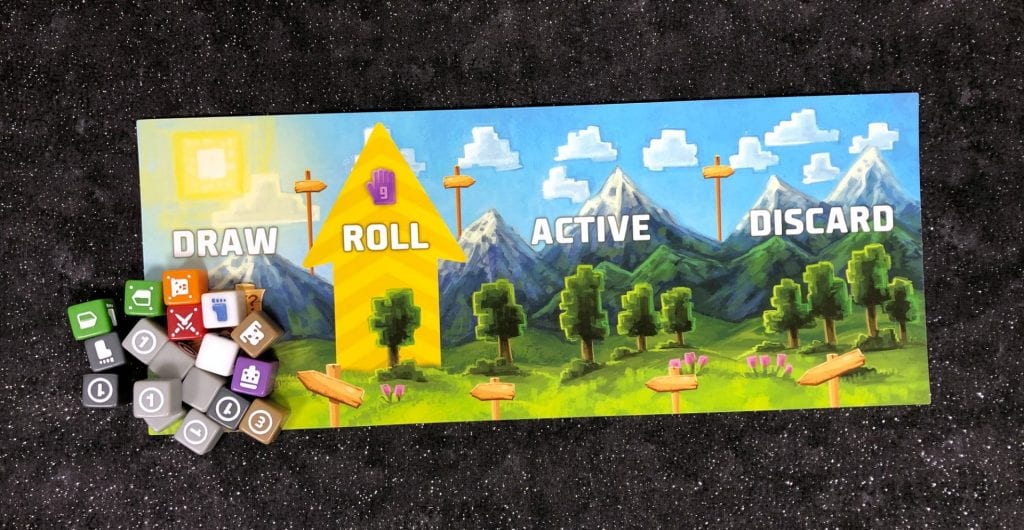
Busting (Makes You Feel Good)
A bust occurs when you roll your available dice and get no “hits”. Players can’t bust until they’ve moved at least 3 dice into their Active section. But after that occurs, any subsequent rerolls might result in you busting. Cubitos soothes the pain of a “bust” by allowing players to move their figure one space further along the Fan Track. This can provide additional income or an increased hand size; potentially allowing you to roll as many as 12 dice each turn.
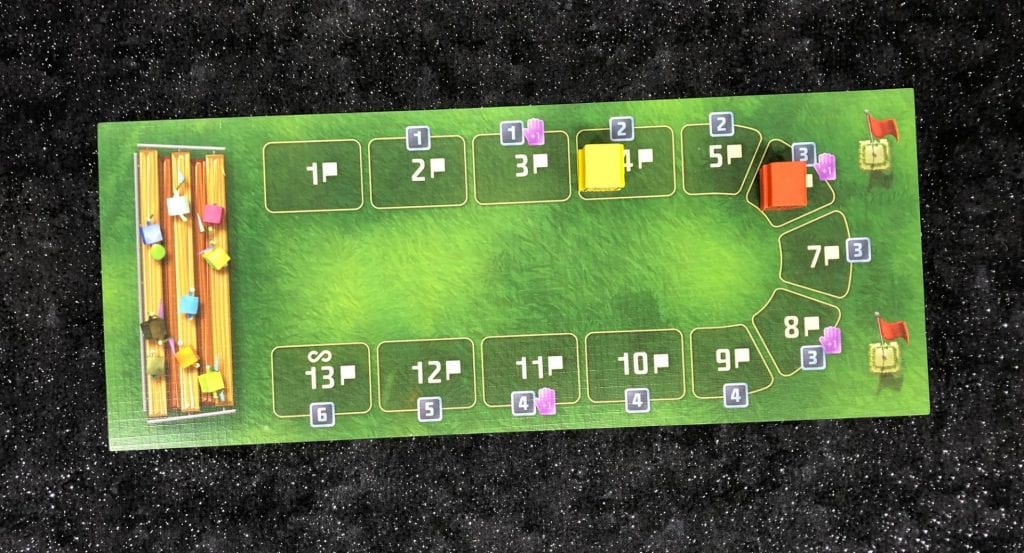
The Run Phase
During the Run Phase players will resolve the faces of their Active dice, move their figure along the race track, and buy additional dice (thereby increasing their dice pool). While a bit of an oversimplification, there are 3 types of symbols you might encounter on your dice, each of which is tied to a particular part of the Run Phase.
Ability / Power Symbols
Each set of colored dice has a distinct symbol which provides a special ability to players based on the card selected at the beginning of the game. Some die faces repeat this symbol, but include 4 dots at each corner of the symbol which provide additional abilities based on the card. Every dice of a given color is identical to the others. Only the selected card changes how the dice is used.
I won’t cover all the possibilities here, but some of my favorites so far are the white die’s Broken Cow which allows you to select any single die for free and use its ability for that turn only (powerful), or the red die’s Supah General which gives extra movement points based on your position on the Fan track, or almost any of the green die’s faces which are all geared on helping you avoid busting (an absolute essential in this game).

Movement
The foot symbol represents a single movement space on the board. Some characters or spaces on the board may convert this single icon into more than a single space of movement. If a player winds up on a Reward space, they may use that space if they are able. Reward spaces allow players to earn Credits, move up on the Fan Track, gain or discard dice, teleport to a space further along the race track, or even double any remaining movement points.
Credits
The circle with a number in it represents money which is available to spend during the Buy Phase of the current round. Any Credits remaining after the Buy Phase are lost. Players may purchase up to 2 new dice from the pool and place them into their Discard pile, unless otherwise instructed.
The rulebook says that the Run Phase can also be played simultaneously but offers guidance on how to play it in turns. We found that playing this section in turns was less confusing and easier to keep track of.
Players repeat the Roll and Run phases until one player reaches the end of the track. In the case of a tie, whichever player has the most remaining movement points is the winner.
The End of the Road
I love games with dice; there’s something satisfying about rolling a handful of dice and letting lady luck choose your fate. Bonus points to games that let you tweak that luck in some ways. I also really enjoy push your luck style games which tells me I should never ever go to Las Vegas or I might wind up having to hock my entire game collection to cover my losses. And don’t get me started on racing games. I’m not terribly competitive, but when it comes to race games, I tend to go a little overboard. Cubitos has all three of those in a single tidy, attractively designed and humorous package.
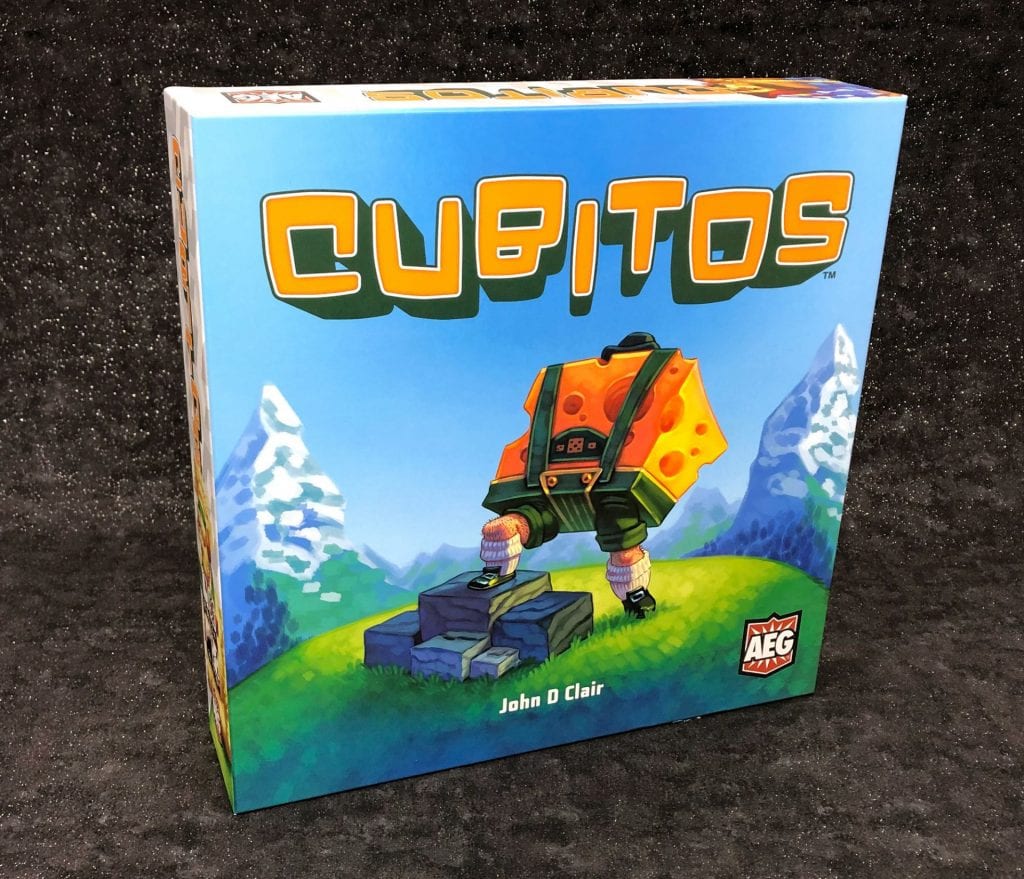
The illustrations of the different characters from Jacqui Davis, Philip Glofcheskie, and Ryan Iler are great: the artwork is bright, colorful, and the little details are really neat. Leg hair stubble on a lederhosen wearing block of Swiss cheese? Why not?! Punk rock pineapple with a leaf mohawk? Of course! And don’t forget the shaggy-haired meditating “lama” llama!
The dice are of great quality, and the engravings are crisp and easy to see, and it’s a great feeling rolling a bunch of dice.
There are a lot of different cards for each color, and the combinations you can come up with really make the game interesting and varied.
The downsides to that variability are that you’re going to have to constantly check the cards to make sure you’re playing that specific ability correctly. You’ll wind up passing the card around the table, or referencing the rulebook. This isn’t automatically a bad thing, but it’s worth pointing out.
If you happen to be familiar with Cubitos already, you might notice that I haven’t mentioned some of the more prominent components, namely the component boxes. AEG chose to include “tuck boxes” for each dice color, as well as boxes for the Draw and Credit tokens. Unfortunately, they didn’t also include room in the game box to leave them assembled which means that if you choose to use these boxes you’ll be assembling and disassembling them for every game. I personally don’t care enough about keeping each color separate to bother with this process. So we dumped them all the dice into a bit tray and picked through them as needed. The Draw and Credit tokens went into another bit tray and we were done.

Cubitos is an enjoyable game. I played it a number of times with my 12 year old son, and we both had a blast offering inputs as to the most beneficial way to use our dice. There was also more than a little family-friendly trash talk involved.
With all these positives going for it, why didn’t I like Cubitos more?
It might sound weird to say that I like push your luck games, then complain about busting all the time, but that’s how I feel. The starting light grey dice have only a single active face, while the dark grey dice have 2. Even though you’re rolling 9 at one time, there were lots of times where I’d roll nothing. Thankfully the 3 dice minimum rule means you won’t bust until you’ve got something. But since the majority of the cards cost 3 coins or more, the temptation – no, the need – to keep rolling for more is strong; in a recent game I busted nine times.
Winning the Draw tokens which increase your hand size might even tempt you to bust on purpose, but unfortunately even being able to roll extra dice against your opponent won’t help you if the dice are simply against you. In games like Can’t Stop I literally can’t stop, and bust quite often, but I still enjoy the experience. But in Cubitos, even though you can get benefits from the Fan Track, it’s all too easy to fall behind by busting. Remember that when you bust, not only do you not move forward, but you’re also *not* buying new dice to improve your lot in the game.
Don’t get me wrong, Cubitos is a fun and enjoyable game, and one which the entire family is likely to enjoy. I suppose pushing my luck too hard is in my nature? But perhaps you might take a roll of the dice and try Cubitos for yourself.


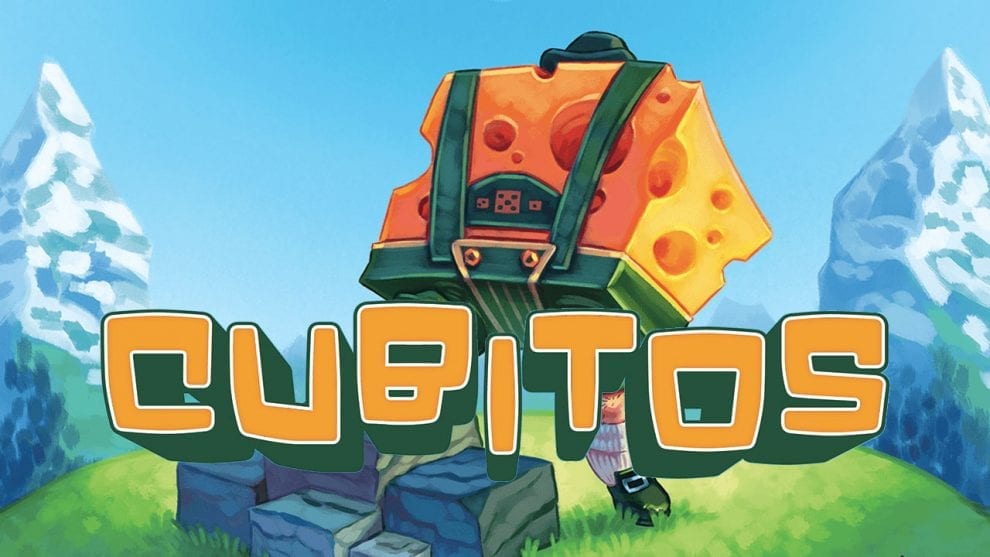

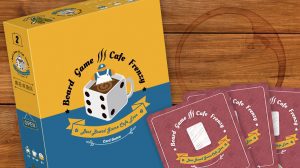
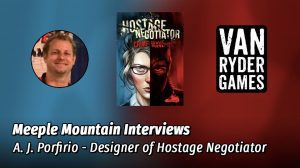






The dice boxes can be left assembled, you just need to lift up the white cardboard ‘insert’ and store boxes on both sides. Many games I’ve played use that space as storage space. Is it ellegant? No. Does it work? Mostly, yeah
Great review!